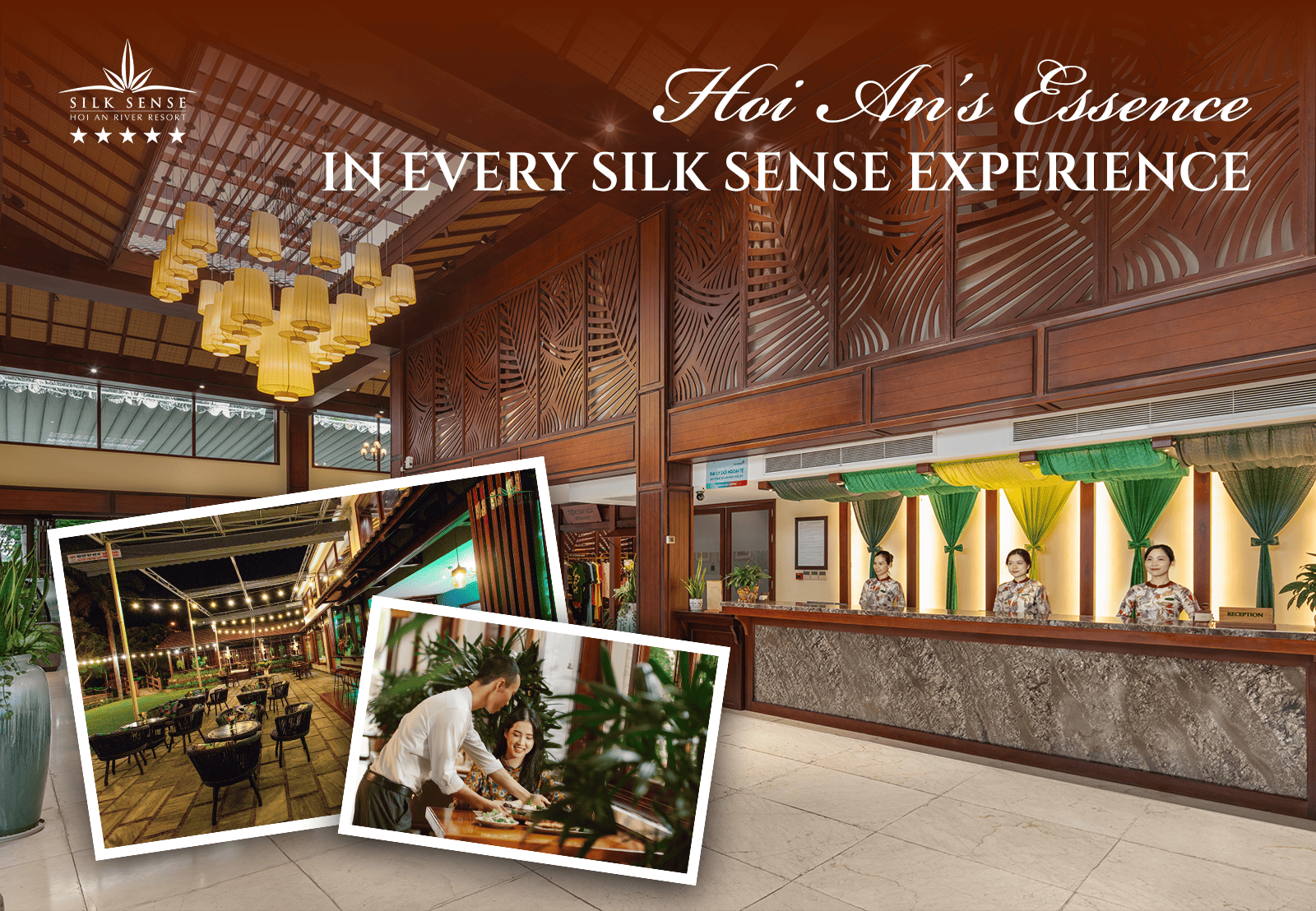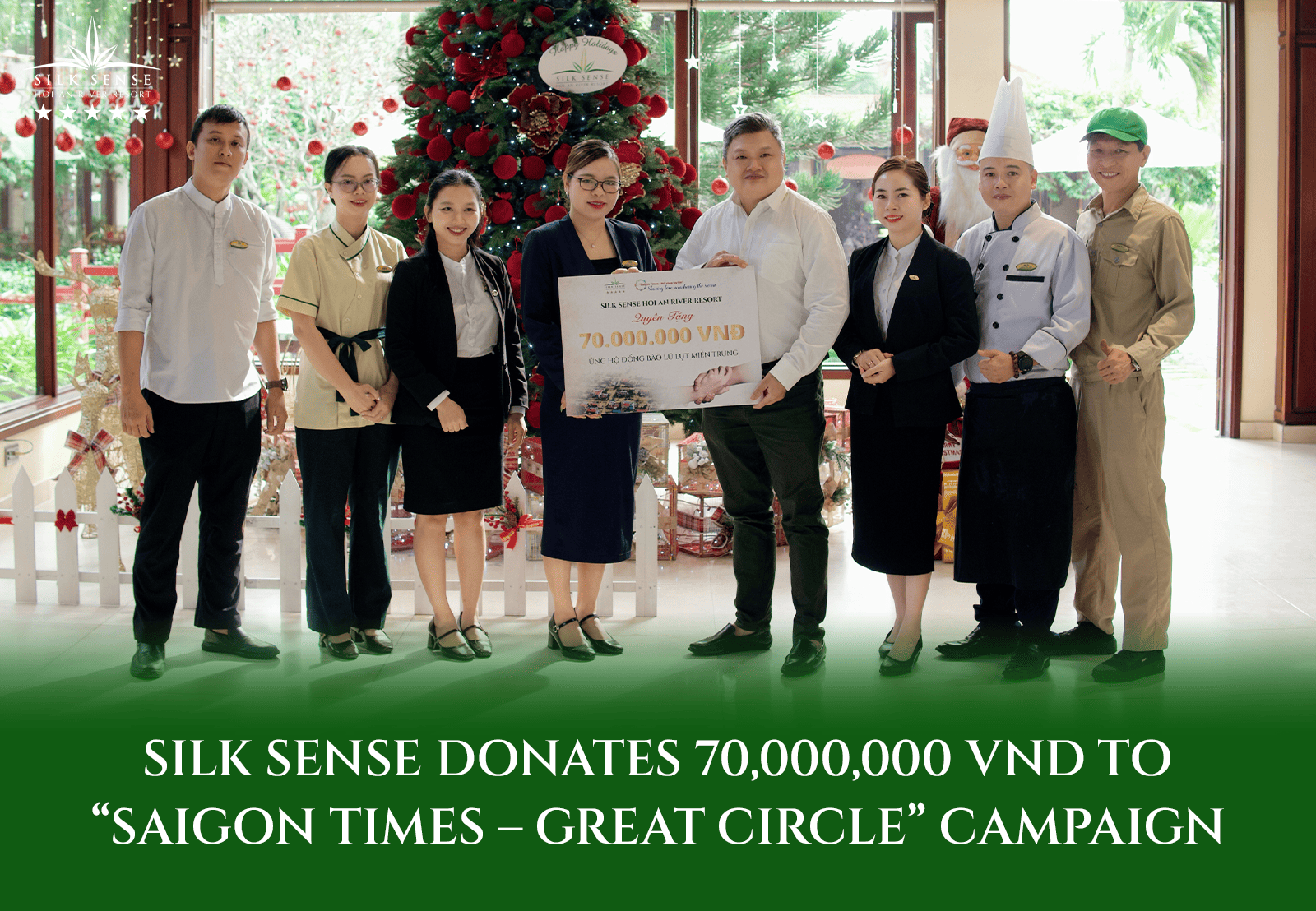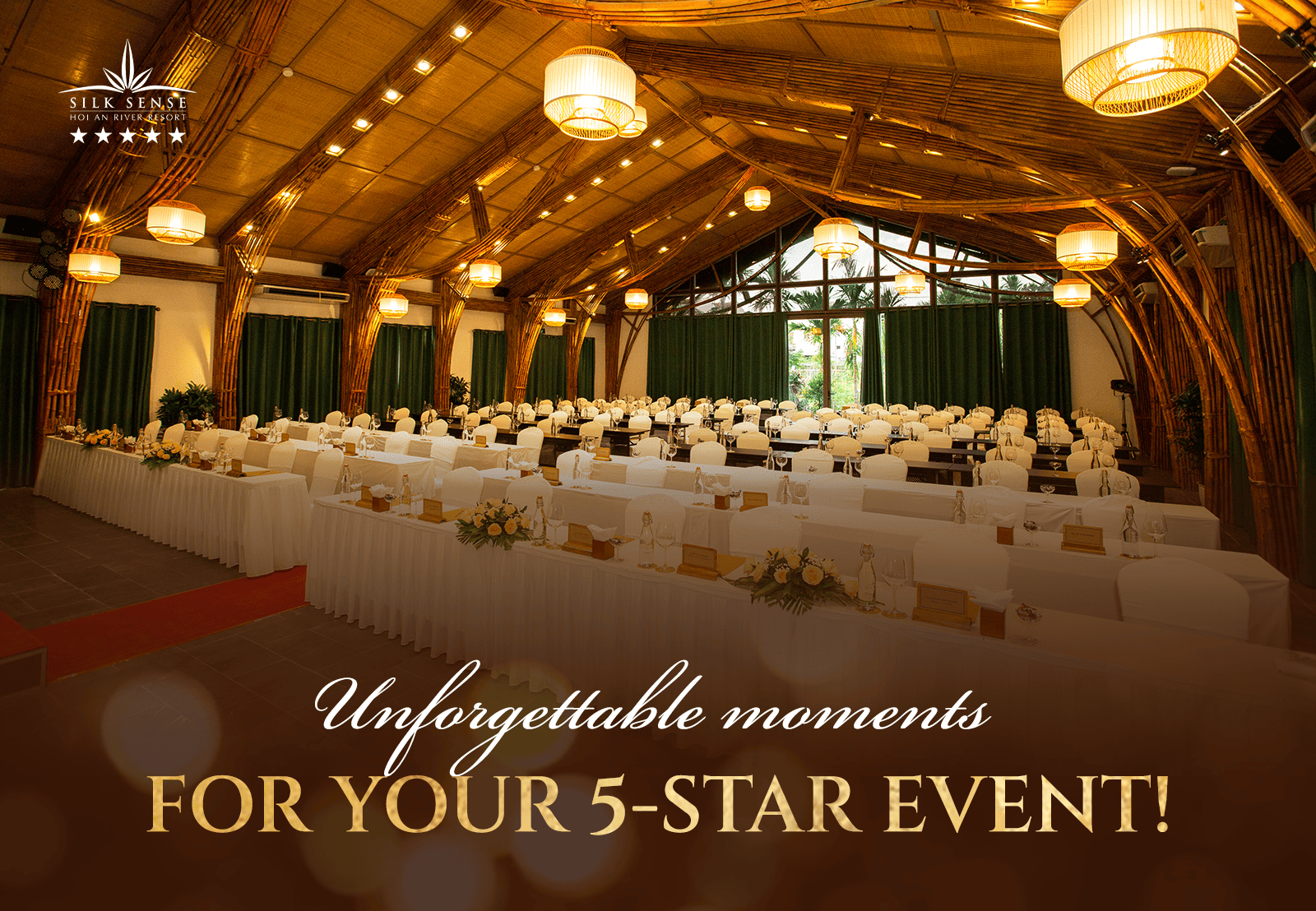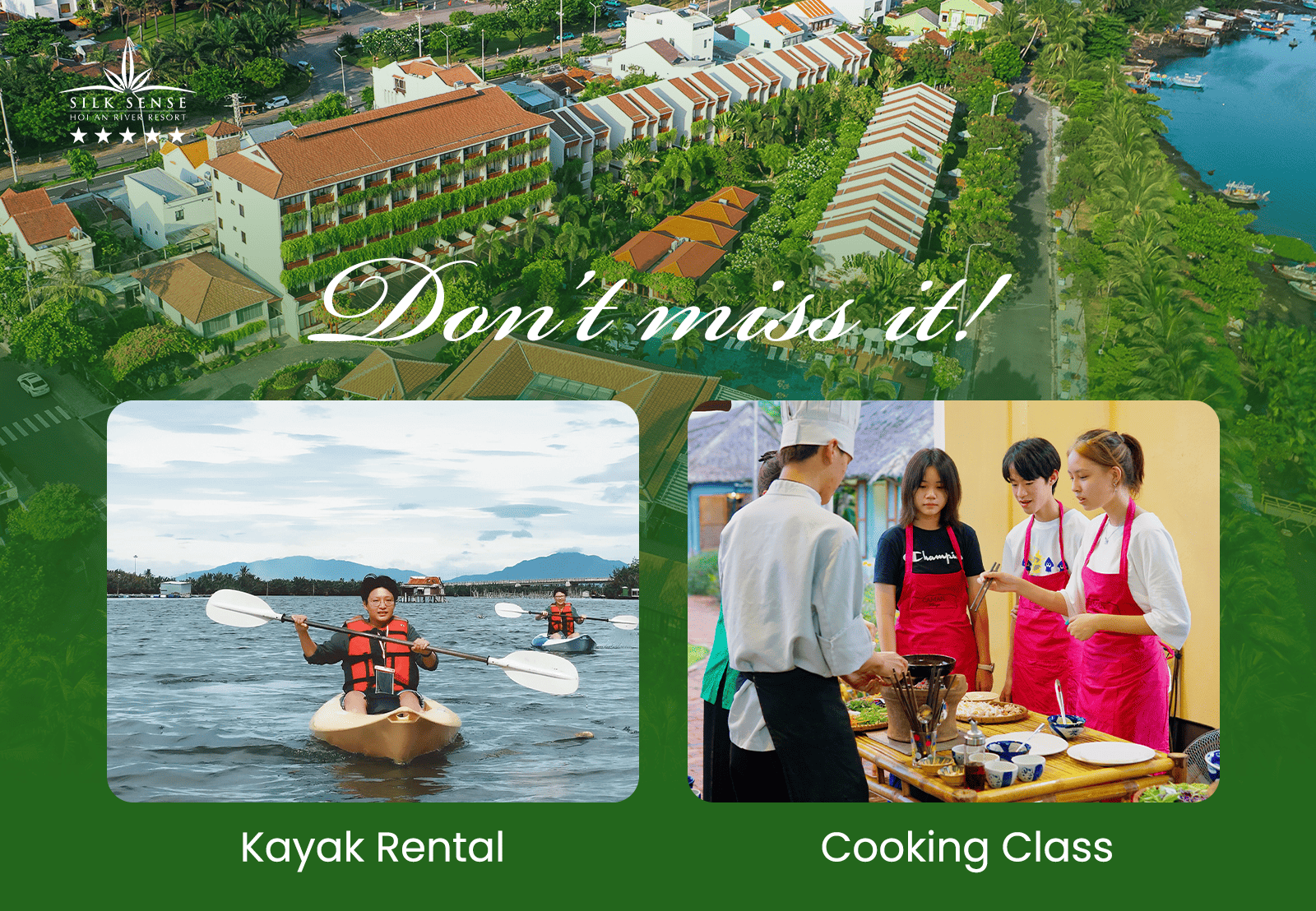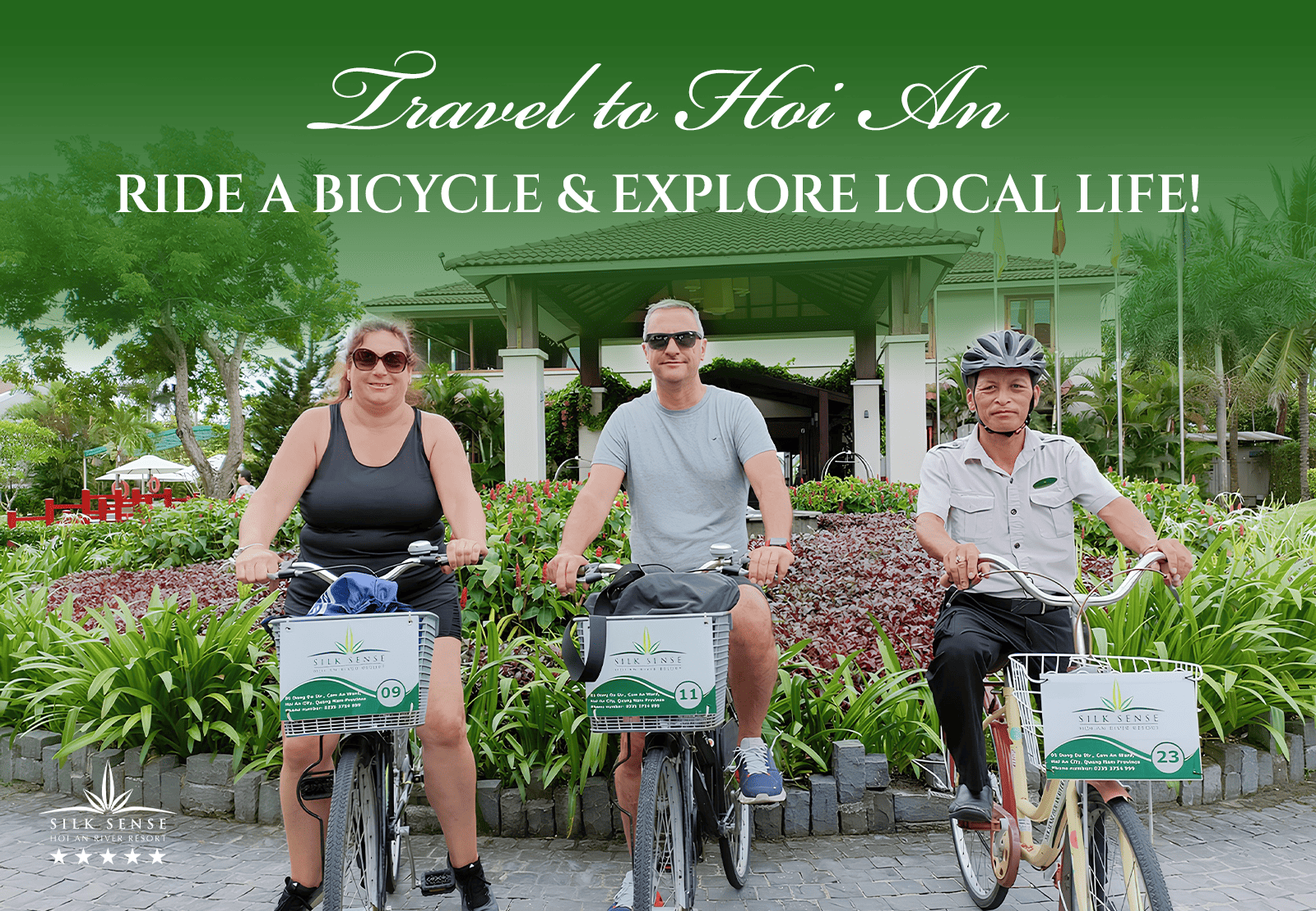Hoi An Travel Experience 2024: Timing, Accommodation, and Attractions
sefa media | 27/09/2024
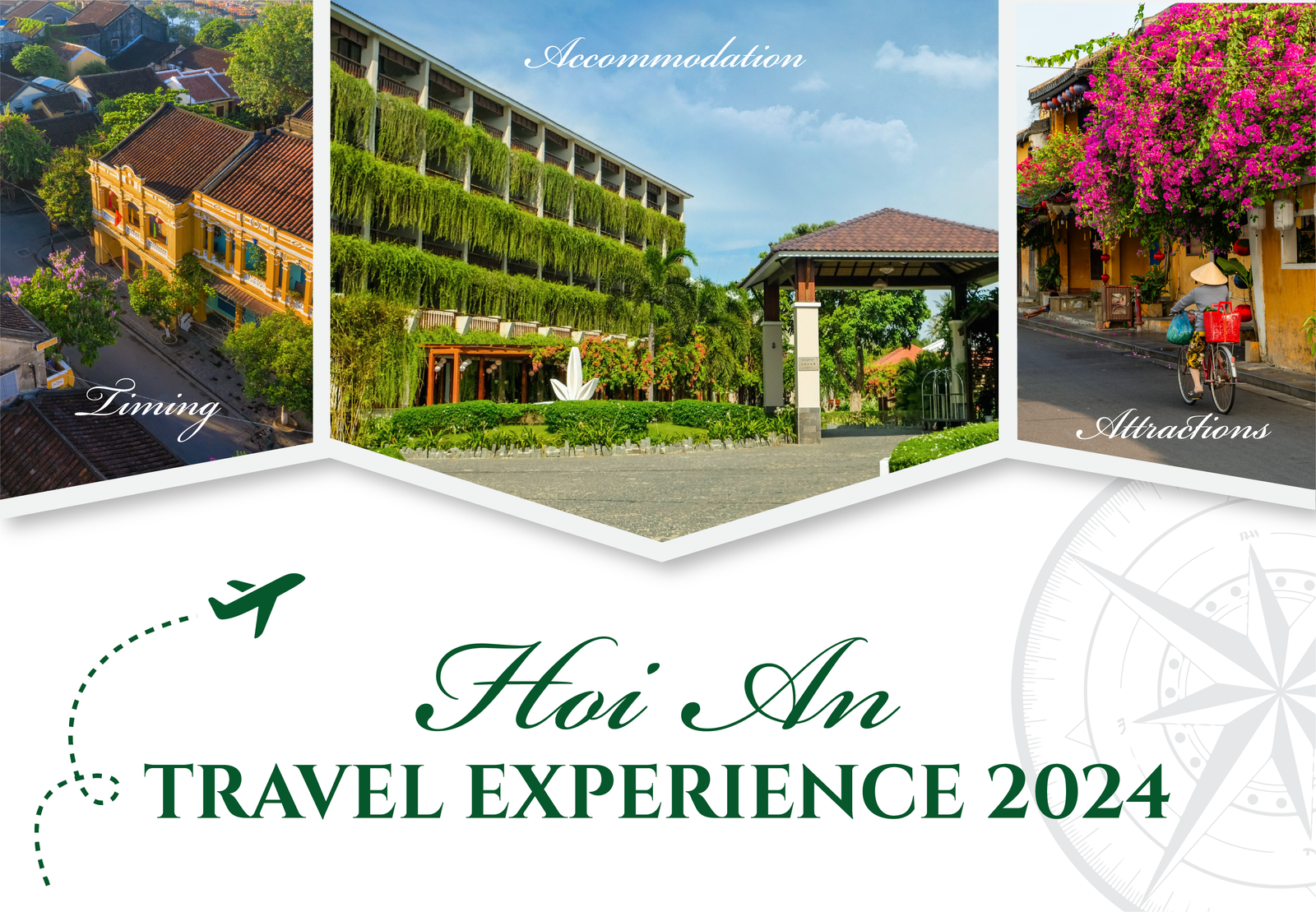
Hoi An is a popular tourist destination in Vietnam, known for its ancient beauty, rich culture, and beautiful beaches. To help you plan the perfect trip to
Hoi An Travel in 2024, here are some detailed travel tips, including the ideal time to visit, accommodation options, and exciting places to explore.
Best time for Hoi An Travel?
Hoi An has 2 main seasons: dry and rainy.
- Dry Season (February to August): This is the best time to visit Hoi An. The weather is dry and warm, making it ideal for sightseeing and beach activities.
At this time, the weather is pleasant with clear skies, and it’s also when many festivals take place, such as the Lantern Festival and the Lunar New Year, where the ancient town is illuminated by shimmering lanterns and filled with vibrant cultural activities.
- Rainy Season (September to January): Hoi An often experiences heavy rainfall, and some areas may occasionally flood. However, if you’re seeking a quiet and romantic atmosphere with misty rains, this could also be an interesting time to visit.
Another special time to visit is during major holidays like Tet (Lunar New Year) or Full Moon nights, when the town is beautifully lit with lanterns, creating a magical scene. Depending on your preferences and travel goals, Hoi An always has something special to offer throughout the year.
Transportation
Getting to Hoi An: You can fly into Da Nang International Airport, then travel to Hoi An by taxi or shuttle (about 30 km). Alternatively, you can take a bus from nearby provinces or a train to Da Nang and continue to Hoi An.
Getting Around Hoi An:
- Bicycles and motorbikes are popular ways to explore Hoi An. The old town features narrow streets with restrictions on motorbikes, so renting a bicycle is a convenient and affordable option for getting around;
- Electric cars and boats are also fun choices, offering a unique way to explore the ancient town or enjoy the scenic Hoai River.
Hotels, Homestays, and Resorts Accommodation
Hoi An offers a wide range of accommodation options, from cozy homestays to upscale riverside hotels and resorts.
- Homestays: If you want to immerse yourself in the local culture and feel the warmth of a close-knit community, homestays are an ideal choice. Hoi An’s homestays not only offer comfort but also feature traditional architecture that reflects the historic charm of the town.
- Hotels: The 2-4 star Hoi An Hotel is mostly concentrated near the Old Town, making it convenient for sightseeing and dining experiences. These hotels are affordable and provide all necessary amenities.
- Resorts: If you are looking for luxury and comfort, choose the 5-star Hoi An beach resorts. These resorts often feature lush green spaces, private pools and premium services.
For a luxurious and unique stay, Silk Sense Hoi An River Resort is a highly recommended destination. As one top of standard 5-star Hotel Hoi An, it is a pioneer in winning sustainable green tourism awards.
Located along the Co Co River, Silk Sense provides easy access to Hoi An. Here, you’ll enjoy an unparalleled serene green space, with 70% dedicated to greenery and only 30% for infrastructure. Silk Sense stands out for its ZERO Plastic Waste; a chlorine-free mineral infinity pool treated with a unique ozone and sea salt system; premium spa and dining services and five-star accommodations ranging from river-view open apartments to private villas with their own gardens and pools.
Silk Sense Hoi An River Resort is not just a place to rest but also a symbol of Vietnam’s green and sustainable tourism journey. With premium facilities, spacious green areas, and thoughtful service, Silk Sense will surely be the ideal accommodation choice for your vacation in Hoi An.
Must-Visit Destinations in Hoi An Travel
Silk Sense suggests some must-visit famous tourist spots in Hoi An when you travel here.
Phung Hung Ancient House (Nha co Phung Hung)
- Address: 4 Nguyen Thi Minh Khai, Cam Pho Ward, Hoi An City
- Opening hours: 8:00 AM – 6:00 PM, every day of the week
- Ticket price: 80,000 VND for Vietnamese visitors, 120,000 VND for international visitors (includes visits to three ancient houses: Phung Hung, Duc An, and Quan Thang)
Phung Hung Ancient House is one of the typical old houses in Hoi An, distinguished by its unique architecture and profound historical value. Built in the 1780s, the house is not only an important tourist attraction but also a clear testament to the cultural exchange and prosperity of the ancient Hoi An trading port.
The architecture of Phung Hung Ancient House is a perfect blend of Vietnamese and Chinese influences. The structure consists of three main sections – a guest area, a family living area, and a trading section – reflecting the careful attention to detail in design and decoration.
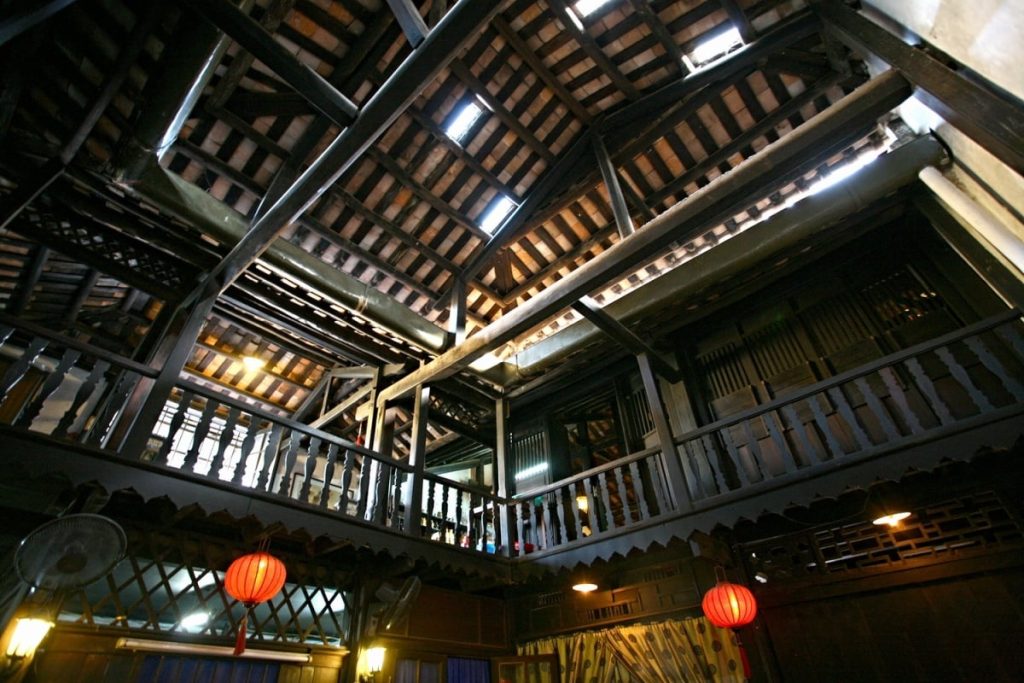
One of the standout features of Phung Hung Ancient House is the main door and intricate carvings, especially the floral patterns and wooden panels. The interior walls are painted bright red, combined with finely carved wooden details, creating a warm and luxurious atmosphere. The house is also notable for its spacious living room and traditional living spaces, where one can feel the cultural blend in every design detail.
The house was once home to eight generations of the Phung Hung family, one of the most renowned merchant families during the heyday of the ancient town. The upper floor was once used to display commercial goods, particularly silk and other merchandise, while the lower floor served as the reception and family living area.
Visitors to Phung Hung Ancient House will have the chance to explore traditional living spaces and admire antique furniture such as tables, chairs, cabinets, and decorative items, all carefully preserved to maintain their cultural and historical significance. Tour guides on-site will share stories and traditional customs of Hoi An, offering a deeper understanding of the life of ancient merchant families.
Cau Bridge (Chua Cau)
- Address: At the junction of Tran Phu Street and Nguyen Thi Minh Khai Street, spanning a small canal connected to the Hoai River
- Opening hours: 9:00 AM – 11:00 AM | 3:00 PM – 10:00 PM, every day of the week
- Ticket price: 80,000 VND for Vietnamese visitors; 120,000 VND for international visitors
Chua Cau, also known as the Japanese Bridge or Lai Vien Kieu, is one of the most famous symbols of Hoi An. Built in the 17th century by Japanese merchants, the bridge features a unique architectural style, combining traditional Japanese and Vietnamese elements.
Chua Cau is constructed entirely from wood, with a roof adorned with intricate carvings. Under the soft light of sunset or the glow of lanterns at night, the Japanese Covered Bridge appears magical, like a painting. Visitors often come here to take photos, admire the ancient architecture, and learn about the history associated with the bridge.
The bridge is also the site of many traditional cultural activities in Hoi An, especially during full moon nights and major festivals. If you visit Hoi An during the Lantern Festival, you’ll be treated to a unique cultural experience with hundreds of lanterns illuminating the area around the bridge. A small tip: Chua Cau can get very crowded, so consider visiting around 9:00 AM or between 2:00 – 3:00 PM for fewer tourists.
Beaches in Hoi An
Hoi An is not only famous for its ancient town but also for its beautiful beaches, ideal for relaxation and outdoor activities. Some standout beaches you should not miss when traveling to Hoi An include:
- An Bang Beach: One of the most beautiful and well-known beaches in Hoi An, located about 5 km from the ancient town. Known for its pristine, peaceful atmosphere and its lack of commercialization, An Bang is the perfect choice for visitors seeking a relaxing space with soft white sand and clear blue waters.
- Cua Dai Beach: About 5 km from Hoi An’s center, Cua Dai is another famous beach with long sandy shores, blue waters, and spacious areas. Cua Dai Beach was once a favorite destination for tourists, especially those wanting to escape the noise of the city.
- Ha My Beach: Located about 7 km from Hoi An, between Da Nang and Hoi An, Ha My Beach is known for its fine white sand and emerald green waters. Though less known compared to An Bang and Cua Dai, Ha My is becoming increasingly popular due to its untouched beauty and peaceful surroundings.
- Tan Thanh Beach: One of the lesser-known beaches worth exploring when visiting Hoi An. Located about 6 km from the city center, Tan Thanh Beach is particularly special for its early morning fish market. Here, you can join the locals in buying and selling fresh seafood directly from fishing boats. The area also features small cafes and restaurants where you can enjoy breakfast while gazing at the serene sea view.
Cham Islands (Cu lao Cham)
- Address: Tan Hiep Island Commune, Hoi An City
- Ticket price: Speedboat/canoe ticket to Cham Islands costs about 450,000 – 600,000 VND per person, including island entrance and snorkeling fees.
Cu lao Cham are a group of islands located about 18 km from Hoi An, comprising eight small islands. Known for their untouched beauty and rich marine ecosystem, Cu lao Cham are a perfect destination for those who love snorkeling, exploring the ocean, and enjoying the peaceful island atmosphere.
To reach Cu lao Cham, you can take a speedboat from Cua Dai Port (about a 15-20 minute journey) or opt for a traditional wooden boat experience. On the islands, visitors can snorkel to see vibrant coral reefs and a variety of marine life. The beaches of Cham Islands are distinguished by clear blue waters, long stretches of white sand, and refreshing coconut groves.
Additionally, visitors can stop by Tan Hiep Market to shop for fresh seafood or handicrafts made by local fishermen. The island’s restaurants also serve delicious seafood dishes prepared fresh on the spot.
Bay Mau Coconut Forest (Rung dua Bay Mau)
- Address: Group 2, Can Nhan Village, Cam Thanh Commune, Hoi An City
- Ticket price: Entrance fee: 30,000 VND per person. Boat tour through the coconut forest with basket boat experience: 150,000 – 200,000 VND per person.
Located about 3 km from the center of Hoi An, Rung dua Bay Mau is often referred to as a “miniature Mekong Delta,” where you can experience the typical river life of Hoi An locals. Rung dua Bay Mau served as a base for local soldiers during wartime and has now become an attractive eco-tourism destination.
Visitors can experience riding basket boats through small canals, admiring the diverse ecosystem with lush green coconut groves. Additionally, you can partake in local activities such as fishing, casting nets, and enjoying fresh seafood specialties at floating restaurants.
Hoi An always knows how to captivate visitors with its ancient, peaceful beauty. We hope that with the suggestions above, you will be able to plan a reasonable and enjoyable your Hoi An Travel. If you’re still having trouble choosing accommodations, transportation, or tour options, Silk Sense Hoi An is happy to assist you!
For more information and advice, please contact us via:
(H) +84 96 126 6363
(E) info@silksenseresort.com
(F) https://www.facebook.com/silksenseresort
(IG) @silksenseresort
(A) 01 Dong Da Street, Cam An Ward, Hoi An City, Quang Nam Province, Vietnam




